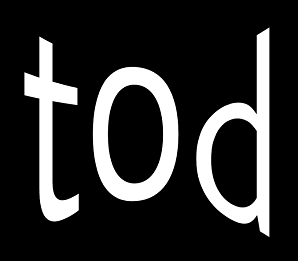Click to Read Sections:
- 1 After Israel Killed a High-Ranking Iranian General and Other Military Officers in Syria Iran Launched an Ineffective Counterattack of 300 Drones and Missiles
- 2 Israel’s Layered Missile Defense Systems
- 3 What Were Iranian Citizens Told About the Counterattack and Its Effectiveness?
- 4 Will Israel Retaliate for the Iranian Counterattack?
- 5 US and UK Announce New Sanctions Following Iran’s Air Attack of Israel
- 6 Israel Launches Drones at Iran in Limited Retaliation
After Israel Killed a High-Ranking Iranian General and Other Military Officers in Syria Iran Launched an Ineffective Counterattack of 300 Drones and Missiles
On April 1, Israeli F-35 fighter jets fired six missiles at a building adjacent to the Iranian embassy in Damascus, Syria killing Brigadier General Mohammad Reza Zahedi of the Islamic Revolutionary Guard Corps (IRGC), seven other IRGC officers, and two civilians. Nearly two weeks later Iran retaliated with more than 300 missiles and drones aimed at Israel, nearly all of which were shot down by American and Israeli anti-missile systems.
This marks the first time Iran has struck Israel directly. In the past, Iran’s proxy forces including Hamas, Hezbollah, and the Houthis have done the dirty work. The counterattack was telegraphed by Iran, giving Israel time to prepare. It’s thought the counterattack was designed more as a face-saving measure than an effective military operation, so as not to further escalate the conflict.
Rocket trails and explosions rocked the night sky above Israel, demonstrating the effectiveness of its Iron Dome defense system. However, at least two Iranian missiles penetrated the defense system, one creating minor damage at a military base and another injuring a Bedouin child in the Negev desert.
Israel’s Layered Missile Defense Systems
Israel’s anti-missile systems are among the most advanced in the world. Consisting of more than the Iron Dome, Israel has multi-layered missile defense comprised of several systems. Each system is specialized for specific types of threats, which allows Israel to defend against a wide range of missile and aerial attacks.

- Iron Dome: This is perhaps the most famous of Israel’s missile defense systems, developed to intercept short-range rockets and artillery shells. The Iron Dome has a remarkable success rate and is capable of determining which incoming projectiles pose a threat to populated areas or critical infrastructure, intercepting them accordingly.
- David’s Sling: Designed to deal with mid-range threats, David’s Sling can intercept enemy planes, drones, tactical ballistic missiles, medium- to long-range rockets, and cruise missiles. It fills the gap between the Iron Dome and Arrow systems in Israel’s multi-layered defense strategy.
- Arrow 2 and Arrow 3: These are long-range missile defense systems designed to intercept ballistic missiles outside the Earth’s atmosphere. Arrow 2 is aimed at stopping missiles within the atmosphere, while Arrow 3 extends this capability to exo-atmospheric (outside the atmosphere) threats. These systems are part of a collaborative effort between Israel and the United States.
- Iron Beam: This is a laser-based defense system designed to complement the capabilities of Iron Dome, David’s Sling, and Arrow by using an energy beam to destroy short-range threats within seconds of detection.
Iron Beam Laser Missile Defense System is Still in Development

The Iron Beam is an advanced laser defense system developed by Rafael Advanced Defense Systems, a leading Israeli defense technology company. It represents a significant leap in military technology complementing Israel’s existing layered air defense array.
- Technology: The Iron Beam system uses a fiber laser to destroy aerial threats, including drones, rockets, mortars, and anti-tank guided missiles. The system works by focusing a high-energy laser beam on a target, sufficient to destroy it within seconds.
- Advantages: One of the main advantages of the Iron Beam is its cost-effectiveness, as laser intercepts are significantly cheaper than using conventional interceptor missiles. Additionally, it provides a nearly infinite number of shots, limited mostly by its power supply and maintenance, making it ideal for handling large volumes of incoming threats.
- Operational Range: While specific details about the operational range are generally not disclosed, the system is designed to engage threats at very short ranges, providing a close-in defense layer.
- Deployment: As of the latest updates, Iron Beam is intended to be deployed alongside existing missile defense systems to provide a comprehensive protective shield against a variety of aerial threats. This system is particularly useful in urban environments where engagement distances are short, and the risk of collateral damage from intercepts must be minimized.
- Status: Iron Beam continues to be developed and tested, with announcements indicating progress toward operational deployment. However, details on its full operational integration and deployment are typically classified.
What is a Fiber Laser?
A fiber laser is a type of laser where the active gain medium is an optical fiber doped with rare-earth elements such as erbium, ytterbium, neodymium, dysprosium, praseodymium, thulium, and holmium. These elements are used because they can efficiently amplify light when excited by a pump source, which is typically a laser diode. Fiber lasers are widely used in various industries for applications such as material processing, telecommunications, and medical surgeries due to their effectiveness and precision. This technology’s versatility and efficiency are why it’s often chosen for both commercial and military applications, including in systems like the Iron Beam for missile defense.
Key Characteristics of Fiber Lasers:
- High Efficiency: Fiber lasers are highly efficient due to the fiber’s ability to confine the light in a core, which minimizes loss of light and maximizes the interaction between light and the gain medium.
- High Output Power: They can generate high power outputs, making them suitable for a range of applications including cutting, welding, and marking materials in industrial settings.
- High Beam Quality: The design of the fiber ensures that the laser emits a high-quality, high-brightness beam, which is ideal for precision work.
- Reliability and Durability: Fiber lasers are known for their robustness and reliability, as they have fewer optical components and are not as susceptible to misalignment or environmental changes compared to other types of lasers.
What Were Iranian Citizens Told About the Counterattack and Its Effectiveness?
Iranian citizens were informed by their media that the April 13 counterattack against Israel was a significant retaliation for previous Israeli actions. The attack was portrayed as a demonstration of Iran’s military capabilities and its willingness to confront Israeli aggression. Iranian state media and military officials described the attack as successful, emphasizing that it was a measured response designed to inflict damage without provoking a massive escalation.

Senior Iranian military and political figures publicly praised the effectiveness of the attack, highlighting its strategic planning and execution. The Iranian Armed Forces General Staff asserted that the attack was a clear message to Israel and its allies about Iran’s capability and resolve. This portrayal was intended to bolster national pride and demonstrate Iran’s standing in the regional power dynamics. The Iranian government used this event to rally public support and underscore its role as a defender of Muslim interests against Israeli policies. The attack was aligned with Iran’s broader strategic narrative of resistance against perceived Western and Israeli hegemony in the Middle East.
A week prior in Tehran and other cities across Iran, large rallies were organized for Al-Quds Day with the participation of top government, judiciary, and military officials, including President Ebrahim Raisi and Quds Force leader Esmail Qaani. Participants in the rallies expressed strong anti-Israel sentiments and showed solidarity with the Palestinian cause. The gatherings were filled with speeches that condemned the United States and Israel, with calls for the liberation of Palestine and the return to what speakers termed as “real Islam,” which they associated with resistance and strength. Additionally, there was also the funerals of Iranian Revolutionary Guard members who had been killed in Israel’s missile attack in Syria.

What is Al-Quds Day?
Al-Quds Day, also known as Jerusalem Day, is observed annually on the last Friday of the Islamic holy month of Ramadan. It was initiated by Iran in 1979 to express support for the Palestinians and to oppose Zionism and Israel’s control of Jerusalem. The day features rallies and protests in various parts of the Muslim world, including Turkey, Malaysia, Indonesia, Iraq, and Lebanon, where it serves as an occasion to express solidarity with the Palestinian cause and critique Israeli policies. saw significant gatherings in countries including Iran, Malaysia, Indonesia, Iraq, and Lebanon. This year, Al-Quds Day demonstrations were marked by strong expressions of support for Palestine and opposition to Israeli policies, particularly in light of the ongoing conflict in Gaza that has resulted in significant Palestinian casualties.
Will Israel Retaliate for the Iranian Counterattack?
Israel is currently weighing its options for responding to the Iranian attack, and while there’s significant pressure from some political factions within Israel for a retaliatory strike, international allies, including the US, are urging restraint to avoid further escalation of the conflict. The Israeli war cabinet has met to discuss potential responses, but decisions on the timing and scope of any military action remain pending. President Biden has warned Prime Minister Netanyahu that the US will not support a counterattack, emphasizing the need for a diplomatic approach amidst the volatile situation.

US and UK Announce New Sanctions Following Iran’s Air Attack of Israel
Less than a week after Iran’s counterstrike on Israel, the US and UK announced new sanctions including 16 people and two entities associated with Iran’s drone program. The sanctions target executives of an engine manufacturer that supplies Iran’s Shahad-131 drones, which were used in the counterattack, as well as companies that service the engines and individuals associated with providing the drones to Iranian proxy forces throughout the Middle East.
Really? Why did Iran have to launch 300 missiles and drones before we imposed new sanctions? Why weren’t these sanctions already in place? Apparently the Biden administration holding on to these sanctions until Iran attacked so they’d have the opportunity to respond with…something. Do we really believe that it only took five days to identify all these executives and the companies involved and their bank accounts? Yeah, right.
Israel Launches Drones at Iran in Limited Retaliation
Six days following Iran’s counterattack, Israel retaliated with a drone attack on the city of Isfahan, home to an air base housing Iran’s fleet of American-made F-14 Tomcat fighter jets, purchased before the 1979 Islamic Revolution. It is also home to a nuclear facility that operates three Chinese-supplied research reactors and handles fuel production.
Israel says sending armed drones at an Iranian military base and nuclear reactor was to avoid further escalation. Really? Why didn’t they just send a sugar-free cake or a dozen stale donuts instead?
Television networks and officials in both countries downplayed the significance of the strike. Israeli officials said it was a limited response aimed to avoid escalating tensions with Iran, especially because it did not cause significant damage to military sites in Iran.
Repeat: Israel said it launched armed drones into Iran because it didn’t want to cause significant damage to a military site.

